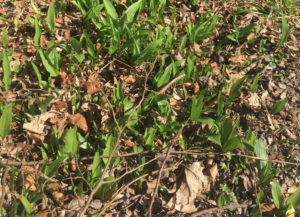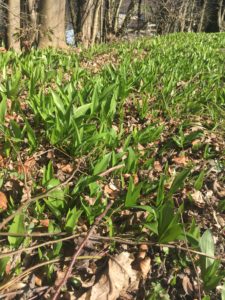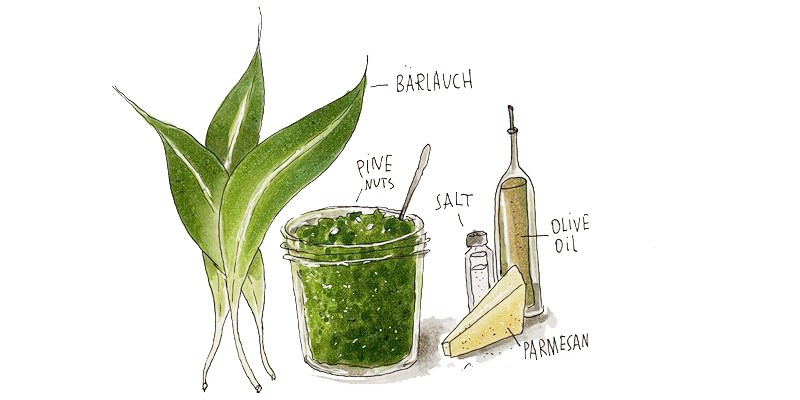Foraging and Wild Garlic Pesto
Wild Garlic – Bärlauch – Bear’s Garlic
Regardless of the name, it’s delicious and it’s ripe for the picking in March and April.
You can’t get any fresher or more local than picking it yourself, and with kids, foraging for Bärlauch is easy and fun.
Bärlauch, a.k.a. Allium ursinu, is a wild relative of onions and garlic, but it looks like a lily of the valley (more on this later). It is native to Europe, where it grows freely – and in abundance – in moist woodlands. For many Swiss, picking it is a rite of early spring; it is one of the first perennials to shoot up through dead brown leaves. And it’s healthy. Bärlauch is packed with essential oils, vitamin C and iron.
Most important, it’s tasty and versatile in cooking. It is more subtle than garlic and can be used in everything from pesto to Capuns (a Bundner specialty), risotto to potato au gratin. A friend even made to-die-for Bärlauch bread. Add Bärlauch to a white wine cream sauce for a fancy touch. Sprinkle it on top of a pizza.

It’s best to pick the leaves that are around seven cm long – not too small, when they are still growing, and not too big, when they have become tough. All parts of the plant are edible, including the buds, which pack a nice punch. Sprinkle some tiny light green buds on a fresh tomato soup and you’ve turned a nice meal into a gourmet treat. Chefs recommend cutting the leaves across their axis with a sharp knife to a millimeter’s fineness and not chopping them like garlic, which would crush the leaves and leave much of the goodness on the chopping block.
Pick it in areas where doggies are not likely to have watered the plants. That often means on hillsides, or in isolated spots. And be careful not to confuse Bärlauch with lily of the valley. Both have roughly the same growing seasons and look similar, but the lilies are poisonous. It’s easy to identify the right plant. Rub two leaves together and wait for the garlicky aroma to waft up. Bärlauch’s aroma is very distinctive.
Bärlauch doesn’t keep long, so pick only what you will be using that day. Save the rest for others – and for your next walk in the woods.

Basic Wild Garlic (Bärlauch) Pesto Recipe
- 200 g. Bärlauch (a large bunch), finely cut on the axis
- 25 g. pine nuts (or more)
- 25 g. Parmesan cheese, freshly grated
- 200 ml olive oil
- salt, to taste
Place all the ingredients in a food processor or blender and puree to a smooth paste. Add more oil or salt, if needed. If I haven’t picked enough bärlauch, I add parsley to the mix. Sometimes I’ll do that even if I have enough bärlauch, because the parsley adds a robustness to the flavor.
Serves 6
If you wait to add the pine nuts and cheese, this can be frozen and enjoyed in winter.
By Alison Langley
Photos by Alison Langley
Alison Langley is a journalist living on and off in Switzerland for the past 33 years, she now lives in a 300-year old farmhouse in Graubünden.
Illustration by Aleksandra Koroleva
Aleksandra, originally from Moscow, Russia, now lives in Adliswil with her husband and 6 year-old son. She specializes in clinical psychology and started studying illustration after her son’s birth. In her free time Aleksandra likes sleeping, just like all mothers do. https://www.instagram.com/uber_evil



